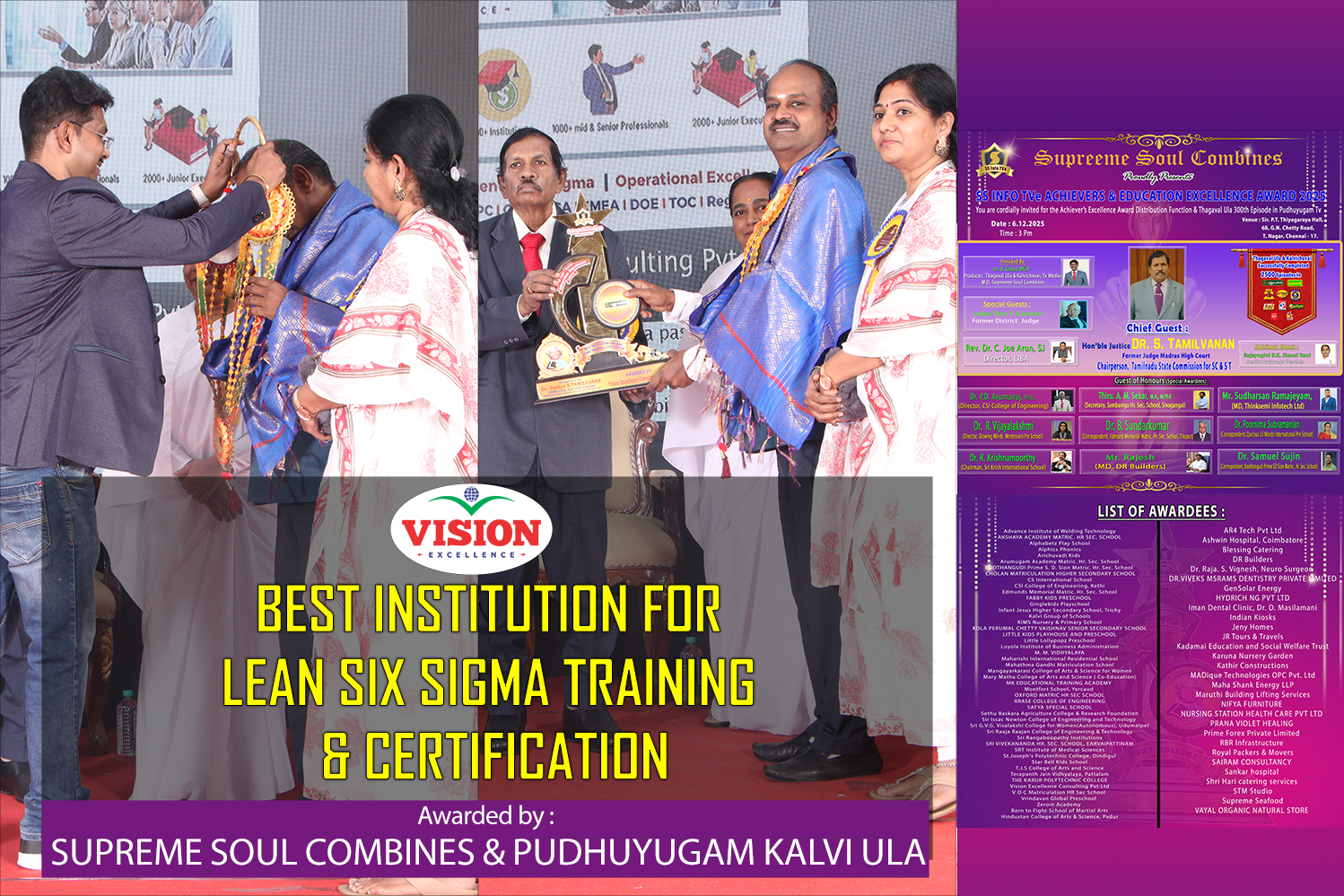Table of Contents
ToggleDeepSeek’s AI Revolution: The Lean Six Sigma Playbook for Disrupting the Industry
🚀 In a single stroke, DeepSeek AI achieved what many thought was impossible—challenging industry giants like OpenAI and Nvidia by delivering high-performance AI at a fraction of the cost.
📉 The aftermath? Nvidia’s stock took a historic 17% plunge, erasing nearly $589 billion in market value as investors reacted to DeepSeek’s ultra-cheap GPU-driven AI model.
🧩 How did DeepSeek achieve this? The answer lies in Lean Six Sigma principles—optimizing resources, eliminating waste, and continuously improving processes. This is a textbook case of cost-efficiency trumping brute-force investment!
Let’s dive into how DeepSeek’s AI strategy applies Lean Six Sigma methodologies to disrupt the industry, why Nvidia is on the defensive, and what businesses can learn from this seismic shift.
📉 Nvidia’s Stock Crash: A Lesson in Lean Six Sigma’s Cost Efficiency
🔹 What happened?
- DeepSeek AI launched a cheaper, yet powerful AI model using low-cost, optimized GPUs.
- Nvidia’s monopoly on expensive AI hardware faced a direct threat, spooking investors.
- Result? A record-breaking 17% drop in Nvidia’s stock price, shaking up the AI industry.
📌 Lean Six Sigma Takeaway:
👉 Over-reliance on expensive resources (like Nvidia’s premium GPUs) creates inefficiencies.
👉 Companies that optimize resource allocation gain a competitive edge.
👉 DeepSeek proved that AI efficiency > AI expenditure.
📊 Comparison: DeepSeek vs. ChatGPT – Lean Six Sigma Cost Efficiency
1️⃣ Investment & Cost Efficiency: Doing More with Less
| Factor | DeepSeek | ChatGPT (OpenAI) |
|---|---|---|
| 💰 Investment in AI Model | $6 million | $100M – $1B |
| 📈 Funding Sources | Private Investors (China) | Microsoft, Venture Capital |
| 🏛 Business Model | Open-source, cost-efficient | Subscription-based (ChatGPT Plus, API) |
| 🎯 Efficiency Focus | Lean cost structure | Large-scale operations |
🔹 Lean Six Sigma Lesson: DeepSeek eliminated non-value-adding expenses by using optimized, cost-efficient GPUs instead of expensive cloud-based solutions.
2️⃣ Workforce Optimization: Leaner, Smarter Teams
| Factor | DeepSeek | ChatGPT (OpenAI) |
|---|---|---|
| 👨💻 Number of Employees | ~200 | ~1,000+ |
| 🎯 Workforce Focus | AI Research & Optimization | AI Research, Deployment, Marketing |
| 🏫 Recruitment Strategy | Young researchers from China’s top universities | Global hiring from AI research institutions |
🔹 Lean Six Sigma Lesson: Minimizing redundant workforce roles and focusing on specialization increases efficiency and lowers operational costs.
🔍 How DeepSeek Applied Lean Six Sigma Methodologies
DeepSeek’s AI strategy aligns with Lean Six Sigma methodologies like Root Cause Analysis (RCA), Value Stream Mapping (VSM), and Kaizen (Continuous Improvement).
🔎 1. Root Cause Analysis (RCA): Solving the AI Cost Problem
Problem: AI models are too expensive due to excessive GPU consumption.
DeepSeek’s Approach:
✔ Identified high GPU costs as the root cause of AI model expense.
✔ Implemented cheaper GPUs (Nvidia H800 instead of A100/H100) to cut costs.
✔ Maintained performance with efficient model architecture (Mixture-of-Experts).
📌 Lean Six Sigma Takeaway: By solving the root cause of high AI costs, DeepSeek found a way to disrupt an entire industry.
📊 2. Value Stream Mapping (VSM): Optimizing AI Development
VSM identifies inefficiencies in AI training and allows for process optimization.
| Stage | Traditional AI Process (ChatGPT) | Optimized AI Process (DeepSeek) |
|---|---|---|
| Data Collection | Expensive dataset curation | Open-source, cost-efficient data sourcing |
| Model Training | 10,000+ GPUs used | 2,048 GPUs used |
| Infrastructure Costs | Cloud-based, high maintenance | Locally optimized, minimal costs |
| Scaling Strategy | Requires extensive data centers | Compact, efficient scaling |
📌 Lean Six Sigma Takeaway: DeepSeek mapped inefficiencies, reduced non-value-adding activities, and optimized GPU usage—resulting in a leaner AI model.
📈 3. Kaizen (Continuous Improvement): AI Model Evolution
✔ DeepSeek continuously optimized its AI model instead of relying on brute-force computing.
✔ Used Mixture-of-Experts (MoE) to maintain quality while reducing computation.
✔ Continuous iterations in model training efficiency resulted in faster, cost-effective AI.
📌 Lean Six Sigma Takeaway: Incremental efficiency gains compound over time—DeepSeek’s AI is improving faster and more cost-effectively than its competitors.
⚡ Market Reactions: How AI Giants & Investors Are Responding
🔹 Nvidia & OpenAI: Nvidia is now considering cheaper AI hardware solutions to counter DeepSeek’s cost advantage. OpenAI is reportedly investigating new GPU partnerships.
🔹 Investors: Many investors shifted focus from high-GPU-intensive AI models to cost-efficient AI startups.
🔹 Tech Giants: Google, Microsoft, and Meta are reassessing AI model scaling costs—some insiders suggest Google could adopt DeepSeek’s lean model.
📢 Key Takeaways: What Businesses Can Learn from DeepSeek’s Success
✔ Efficiency > Investment—Throwing more money at AI isn’t always the best solution. Lean models outperform expensive models.
✔ Lean Six Sigma Thinking Saves Costs—Eliminating unnecessary expenses (like excessive GPU usage) drives higher profit margins.
✔ Lean Teams Perform Better—DeepSeek proved that a focused, efficient team can beat large-scale operations.
✔ Continuous Improvement is Key—Kaizen-driven small, incremental efficiency gains lead to massive long-term advantages.
DeepSeek’s Cost-Efficient Approach: The Lean Six Sigma Case Study
1. Define: The Problem
High-performance AI models like ChatGPT rely heavily on expensive hardware, such as NVIDIA’s GPUs, for training and inference. This creates significant cost inefficiencies and barriers to entry for smaller companies. DeepSeek’s ability to achieve comparable (or even superior) results without relying on such costly infrastructure is a breakthrough worth analyzing.
2. Measure: Key Metrics
To evaluate DeepSeek’s cost-efficiency, we need to measure the following metrics:
- Infrastructure Costs: Cost of hardware and cloud resources used for training and inference.
- Model Performance: Accuracy, speed, and scalability of the AI models.
- Time-to-Market: How quickly the company can develop and deploy new models.
- Energy Efficiency: Power consumption and environmental impact of the AI systems.
3. Analyze: How DeepSeek Achieved This
Using root cause analysis, we can identify the factors that enabled DeepSeek to succeed without high-cost chips:
- Optimized Algorithms:
- DeepSeek may have developed more efficient algorithms that require less computational power. This aligns with Lean Six Sigma’s focus on process optimization.
- Techniques like model pruning, quantization, and distillation could have been used to reduce the size and complexity of their AI models.
- Custom Hardware:
- DeepSeek might be using custom-built hardware or FPGAs (Field-Programmable Gate Arrays) that are cheaper than NVIDIA GPUs but still deliver high performance for specific tasks.
- Cloud Optimization:
- By leveraging cost-effective cloud solutions and optimizing resource allocation, DeepSeek could have reduced its reliance on expensive hardware.
- Focus on Specialized Use Cases:
- Unlike OpenAI, which aims for general-purpose AI, DeepSeek may have focused on specialized applications (e.g., search and conversational AI) that require less computational power.
4. Improve: Lessons for the Industry
DeepSeek’s success offers valuable lessons for the AI industry:
- Cost Reduction: By optimizing algorithms and hardware, companies can achieve high performance without incurring massive costs.
- Sustainability: Lower energy consumption and reduced reliance on high-cost chips make AI more environmentally sustainable.
- Scalability: Cost-efficient models are easier to scale, especially in emerging markets where resources are limited.
5. Control: Sustaining the Advantage
To maintain its cost-efficiency, DeepSeek must:
- Continuously monitor and optimize its algorithms and hardware.
- Invest in R&D to stay ahead of competitors.
- Explore partnerships with hardware manufacturers to further reduce costs.
Comparison: DeepSeek vs. OpenAI (ChatGPT)
| Factor | DeepSeek | OpenAI (ChatGPT) | Lean Six Sigma Insight |
|---|---|---|---|
| Hardware Dependency | Uses cost-efficient hardware (e.g., custom chips, FPGAs) | Relies on high-cost NVIDIA GPUs and cloud infrastructure | DeepSeek reduces waste (costs) while maintaining performance. |
| Model Efficiency | Optimized algorithms for lower computational requirements | Large, resource-intensive models (e.g., GPT-4) | DeepSeek aligns with Lean principles by eliminating inefficiencies. |
| Cost Structure | Lower infrastructure and operational costs | High infrastructure and operational costs | DeepSeek achieves better ROI by minimizing costs. |
| Scalability | Easier to scale in cost-sensitive markets | Scalability limited by high costs | DeepSeek’s approach is more sustainable for long-term growth. |
| Environmental Impact | Lower energy consumption and carbon footprint | High energy consumption due to large-scale GPU usage | DeepSeek’s model is more environmentally friendly. |
Lean Six Sigma Perspective: Key Takeaways
- Cost Efficiency as a Competitive Advantage: DeepSeek’s ability to achieve high performance without relying on expensive hardware is a testament to its process optimization and innovation.
- Sustainability Matters: By reducing energy consumption and infrastructure costs, DeepSeek is not only saving money but also contributing to a more sustainable AI ecosystem.
- Focus on Specialization: DeepSeek’s success highlights the importance of focusing on specific use cases rather than trying to build general-purpose models that require massive resources.
Conclusion: A New Paradigm in AI Development
DeepSeek’s approach challenges the conventional wisdom that high-performance AI requires expensive hardware. By leveraging Lean Six Sigma principles—such as waste reduction, process optimization, and continuous improvement—DeepSeek has demonstrated that it’s possible to achieve remarkable results without breaking the bank.
This could inspire a shift in the AI industry, where companies prioritize cost-efficiency and sustainability alongside performance. As the competition between DeepSeek and OpenAI continues, it will be fascinating to see how these two approaches evolve and shape the future of AI.






